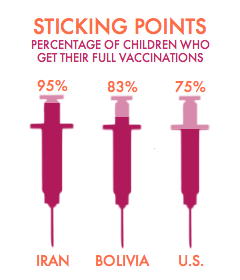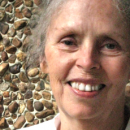
June 17, 2013 | Health and Well-Being
Good Advice from America’s Most Famous Midwife
5 lessons from mother-child advocate Ina May Gaskin.

Ina May Gaskin's dedication to ensuring that babies and mothers have a safe, natural and beautiful birth experience has made her America's most famous midwife--and also the only midwife to have an obstetric procedure named after her. Her claim to fame is the Gaskin Maneuver, which allows non-surgical delivery of a baby whose shoulders are stuck in the birth canal. In the U.S., doctors traditionally solved this dilemma by operating on the mother and breaking the baby's collarbone. Gaskin, however, changed many doctors' minds after she traveled to Guatemala's highlands and saw local midwives delivering "stuck" babies simply by having the mother change her position.
Only about 7 to 8 percent of U.S. births are attended by midwives, but Gaskin is working hard to boost that ratio higher. Her innovative technique and her education campaign have earned her numerous awards, as well as a visiting fellowship at Yale. Here, she shares her wisdom on women and birth.
1. Mothers, you can take back the birth process.
In the 1950s and '60s, two-thirds of pregnant women had their children pulled into the world by forceps. When Gaskin was about to deliver her first child in 1966, doctors strapped her to the delivery table, delivered the baby with forceps and separated her from her child for more than 24 hours. "It was not an experience that I was not going to repeat if I could find any way around it," she says. Since then, she has encouraged women to take ownership of their bodies and deliveries.
2. Every birth is different.
Women choose to have home births for a variety of reason, but that doesn't mean that home births are for everyone. As Gaskin explains, "Every birth is unique and what may work for one woman may not work so well for another. It's all about making birth as graceful and wonderful an experience as we can for all mothers and babies."
3. The most "advanced" medicine is not necessarily the best.
Like the Gaskin Maneuver, there are plenty of techniques we can learn from other cultures, says Gaskin. "Upright labor positions, free movement of the mother during labor, and correcting less optimal fetal positions during pregnancy or labor" are a few of the many practices she has learned from women around the world. Some maternity wards in the U.S. are integrating these techniques with positive results: At one hospital, Cesarean section rates are down from 30-40 percent to 10 percent or less.
4. Doctors and midwives can work together.
"I've been blessed from the beginning of my career in midwifery by having positive relationships with physicians who approved of what I was doing," says Gaskin. "Wherever I go, I find physicians who are interested in regaining some of the obstetric skills which used to be considered essential but are now rarely taught in this country."
5. Most important: Respect other women's choices.
"Knowledge of history, patience, and persistence will be necessary if we want to change the world for the better," says Gaskin. "It doesn't help for women to sit in judgment on other women's choices. It does to try to understand the reasons why people make the choices they do."